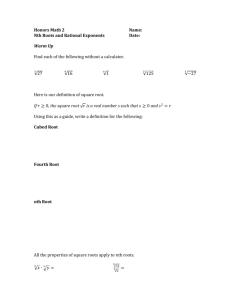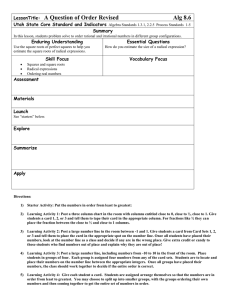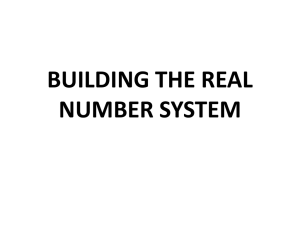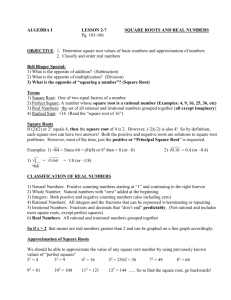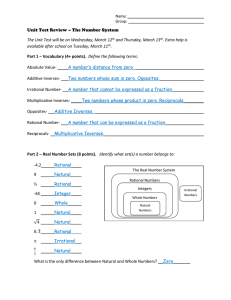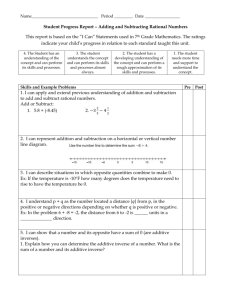Numbers Chapter 1
advertisement
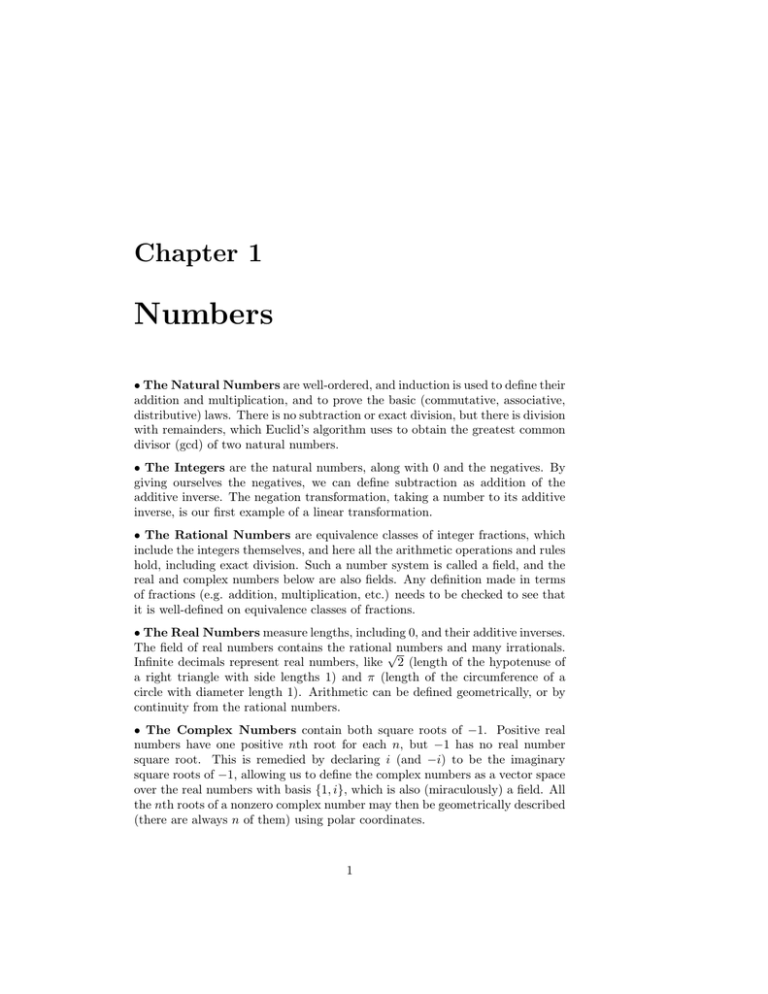
Chapter 1
Numbers
• The Natural Numbers are well-ordered, and induction is used to define their
addition and multiplication, and to prove the basic (commutative, associative,
distributive) laws. There is no subtraction or exact division, but there is division
with remainders, which Euclid’s algorithm uses to obtain the greatest common
divisor (gcd) of two natural numbers.
• The Integers are the natural numbers, along with 0 and the negatives. By
giving ourselves the negatives, we can define subtraction as addition of the
additive inverse. The negation transformation, taking a number to its additive
inverse, is our first example of a linear transformation.
• The Rational Numbers are equivalence classes of integer fractions, which
include the integers themselves, and here all the arithmetic operations and rules
hold, including exact division. Such a number system is called a field, and the
real and complex numbers below are also fields. Any definition made in terms
of fractions (e.g. addition, multiplication, etc.) needs to be checked to see that
it is well-defined on equivalence classes of fractions.
• The Real Numbers measure lengths, including 0, and their additive inverses.
The field of real numbers contains the rational√numbers and many irrationals.
Infinite decimals represent real numbers, like 2 (length of the hypotenuse of
a right triangle with side lengths 1) and π (length of the circumference of a
circle with diameter length 1). Arithmetic can be defined geometrically, or by
continuity from the rational numbers.
• The Complex Numbers contain both square roots of −1. Positive real
numbers have one positive nth root for each n, but −1 has no real number
square root. This is remedied by declaring i (and −i) to be the imaginary
square roots of −1, allowing us to define the complex numbers as a vector space
over the real numbers with basis {1, i}, which is also (miraculously) a field. All
the nth roots of a nonzero complex number may then be geometrically described
(there are always n of them) using polar coordinates.
1

